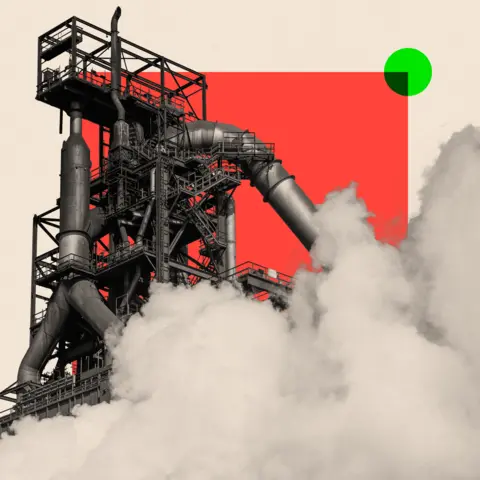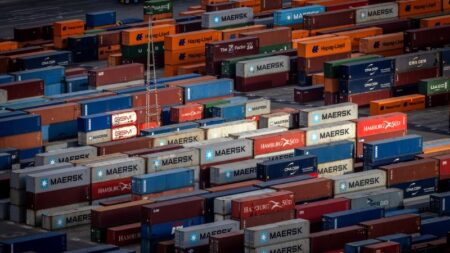The looming threat of tariffs imposed during Donald Trump’s administration has raised significant concerns for the United Kingdom’s steel industry, particularly affecting towns like Port Talbot, which has a deep-rooted history in steel production. Amidst a landscape where steel towns face existential challenges, workers like Ryan Davies, who invested over three decades at the Port Talbot steelworks, find themselves in uncertain territory as the industry undergoes transformations that have removed thousands of jobs.
Historically, Port Talbot’s steelworks has been a central feature of the community, its chimneys visible from miles away, symbolizing not just industrial achievement but also communal identity. Ryan Davies recalls starting in a steel plant filled with noise and danger, where rumors of impending plant closures circulated regularly yet often proved unfounded. However, as the years progressed, valid fears emerged about the future of steelmaking in light of restructuring initiatives by Tata Steel, the plant’s Indian owners. The closing of blast furnaces in 2022 and the resulting loss of employment for many were both tangible reminders of an industry in decline and facing profound economic pressure. As a testament to the plant’s impact, Davies reflects on how the shutting down marked “the end of 100 years of steelmaking” in a town that has always relied on this critical industry for economic stability and community identity.
The decline of the steel industry is not an isolated case; it resonates across several British communities like Redcar in North Yorkshire and Scunthorpe in Lincolnshire. These towns faced similar fates, grappling with the adverse effects of globalization, market competition from cheaper imports, particularly from China, and a broader shift towards a service-driven economy. This transition was painfully evident in Redcar, which famously represented a “rust belt” of local pride turned to economic hardship, highlighted by then-Prime Minister Margaret Thatcher’s visits to derelict industrial sites in the late 20th century.
Currently, the UK’s steel sector grapples with concerning energy prices and the weight of tariffs on its export capabilities. While tariffs on cars and aerospace goods have seen reductions, the 25% tariff on UK steel and aluminum introduced during Trump’s administration remains in effect. The uncertainty surrounding these tariffs hampers confidence in the industry and restricts potential growth in exports. Several steel executives have voiced exasperation, noting that the ongoing negotiations with U.S. trade negotiators have proven to be complicated due to the sheer volume of required negotiations across various sectors.
As communities like Port Talbot face an uncertain future, there is growing discourse about what these regions can evolve into post-steel. One solution includes pivoting to green technologies and renewable industries. A notable initiative in Redcar demonstrates this shift, where the land once occupied by steel works is being redeveloped into a space that could potentially house renewable energy sectors and carbon capture systems. This ambitious vision aims not only to create thousands of jobs but also to reposition the area as a hub for progressive industries, marking a departure from its steel industrial roots.
Despite activist groups and unions pushing for the preservation of traditional steel practices, experts argue a broader economic landscape transition is essential. The call to embrace knowledge-based industries rather than hold onto the romanticized notion of steel jobs is echoed by economic scholars who caution against ignoring the fundamental changes in the job market.
Overall, the experiences of steelworkers, from Ryan Davies’s journey into street art following redundancy to Cassius Walker-Hunt trying to establish a coffee shop in Port Talbot, illustrate the complex realities of post-industrial towns. While new opportunities abound, resulting struggles underscore the difficulty of transitioning from a legacy rooted in steel. Amid these conversations regarding the future of these towns, one fact remains certain: communities once defined by steelmaking are now navigating the uncharted waters of next-generation sectors while still tethered to their industrial legacy. The journey ahead holds promise, but also a collective yearning for stability and renewal in a rapidly changing economic landscape.











